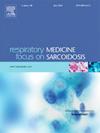Therapeutic drug monitoring of elexacaftor, tezacaftor, and ivacaftor before, during, and after pregnancy in women with cystic fibrosis: An observational study
IF 3.5
3区 医学
Q2 CARDIAC & CARDIOVASCULAR SYSTEMS
引用次数: 0
Abstract
Background
Elexacaftor/tezacaftor/ivacaftor (ETI) has improved health and increased life expectancy in many patients with cystic fibrosis (pwCF). Family planning issues have become more important since then. Many women decide to remain on modulator therapy during pregnancy despite insufficient evidence-based recommendations for continuing ETI during pregnancy and lactation.
Methods
In this retrospective observational report, we present data on maternal serum concentrations of ETI, assessed via a therapeutic drug monitoring (TDM) program established at our CF center for adults. Blood was taken during routine visits. We retrospectively analyzed the corresponding predicted forced expiratory volume in 1 s (ppFEV1), at five time points before, during, and after pregnancy.
Results
Of seven ETI-exposed pregnancies in six women between February 2021 and September 2023, the intake of ETI resulted in no maternal complications and healthy offspring. The dose was reduced in all women, 71.4 % before and 28.6 % during pregnancy, primarily as a result of side effects and/or increased ETI concentrations. Despite dose reductions, serum concentrations showed a broad distribution, with values below, within, and above the Cmax range according to the pharmacokinetic data in the manufacturer's product characteristics. Pulmonary function largely remained stable without pulmonary exacerbations requiring intravenous antibiotic treatment.
Conclusion
This observational report shows the most extensive dataset for ETI concentrations during pregnancy. Individualized dose adjustments could help to resolve adverse side effects while continuing CFTR therapy. Specific populations, such as pregnant women, might benefit from a TDM. However, future research with more pharmacokinetic data from pregnant pwCF is needed.
囊性纤维化妇女怀孕前、怀孕期间和怀孕后对 elexacaftor、tezacaftor 和 ivacaftor 的治疗药物监测:一项观察性研究。
背景:Elexacaftor/tezacaftor/ivacaftor(ETI)改善了许多囊性纤维化患者(pwCF)的健康状况,延长了他们的预期寿命。此后,计划生育问题变得更加重要。尽管在怀孕和哺乳期间继续使用 ETI 的循证建议不足,但许多妇女仍决定在怀孕期间继续使用调节剂治疗:在这份回顾性观察报告中,我们提供了有关母体血清中 ETI 浓度的数据,这些数据是通过我们的 CF 中心为成人制定的治疗药物监测 (TDM) 计划进行评估的。我们在常规就诊时抽取血液。我们回顾性地分析了怀孕前、怀孕期间和怀孕后五个时间点的相应预测一秒用力呼气容积(ppFEV1):结果:在 2021 年 2 月至 2023 年 9 月期间,6 名妇女的 7 例 ETI 暴露妊娠中,摄入 ETI 未导致孕产妇并发症,后代健康。主要由于副作用和/或 ETI 浓度升高,所有妇女都减少了剂量,其中 71.4% 在孕前,28.6% 在孕期。尽管减少了剂量,但血清浓度仍呈现出广泛的分布,根据制造商产品特性中的药代动力学数据,浓度值有的低于Cmax范围,有的在Cmax范围之内,还有的高于Cmax范围。肺功能基本保持稳定,没有出现需要静脉注射抗生素治疗的肺部恶化:本观察报告显示了妊娠期 ETI 浓度的最广泛数据集。个体化剂量调整有助于在继续 CFTR 治疗的同时解决不良副作用。特定人群,如孕妇,可能会从 TDM 中受益。不过,未来还需要对妊娠期儿童和孕妇进行更多的药代动力学研究。
本文章由计算机程序翻译,如有差异,请以英文原文为准。
求助全文
约1分钟内获得全文
求助全文
来源期刊

Respiratory medicine
医学-呼吸系统
CiteScore
7.50
自引率
0.00%
发文量
199
审稿时长
38 days
期刊介绍:
Respiratory Medicine is an internationally-renowned journal devoted to the rapid publication of clinically-relevant respiratory medicine research. It combines cutting-edge original research with state-of-the-art reviews dealing with all aspects of respiratory diseases and therapeutic interventions. Topics include adult and paediatric medicine, epidemiology, immunology and cell biology, physiology, occupational disorders, and the role of allergens and pollutants.
Respiratory Medicine is increasingly the journal of choice for publication of phased trial work, commenting on effectiveness, dosage and methods of action.
 求助内容:
求助内容: 应助结果提醒方式:
应助结果提醒方式:


